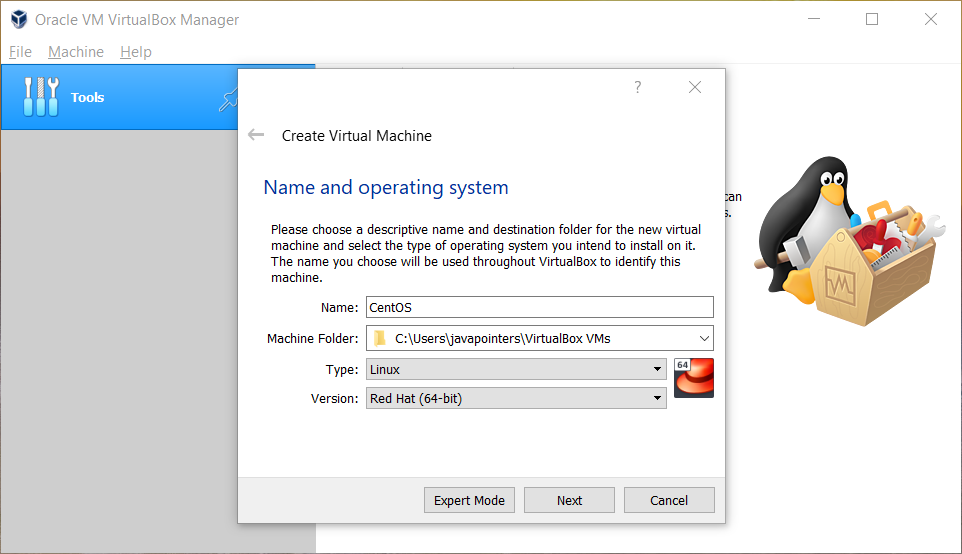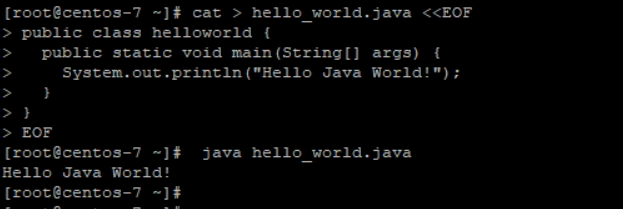
- #CENTOS 8 INSTALL OPENJDK 11 FOR FREE#
- #CENTOS 8 INSTALL OPENJDK 11 HOW TO#
- #CENTOS 8 INSTALL OPENJDK 11 UPDATE#
- #CENTOS 8 INSTALL OPENJDK 11 FULL#
#CENTOS 8 INSTALL OPENJDK 11 FULL#
Then add the following line in the file (replace /opt/jdk-12.0.2/ with the full path to the installation directory of JVM 8 or JVM 11 as shown in the output of alternatives utility above).


You can set it in the /etc/environment global shell start-up file as shown. When set, different Java-based applications and other programs use it to find where Java is installed: the Java version specified is the one used to execute applications. The JAVA_HOME environment variable specifies the directory where the JRE is installed on your system. Switch Javac Version in RHEL 8 Setting Java Version For Applications via JAVA_HOME Variable # alternatives -config javaĪlso, switch javac to the version of Java you want to use as shown. Then confirm that the default version has been switched to what you want. Start with java, choose the version you want using the selection number and press enter as shown in the screenshot. Using alternatives, you need to switch the version of java (which launches the Java application) and javac (which reads class and interface definitions and compiles them into class files) binaries globally as shown. Setting Default Java Version Using Alternatives Let’s look at bother cases as explained below. If you have many versions of Java installed on your system, you can select the version you want to use by default, by either using a command-line utility called alternatives or setting JAVA_HOME environment variable to select the JDK on a per-application basis.
#CENTOS 8 INSTALL OPENJDK 11 HOW TO#
How to Set JAVA_HOME Environment Variable in RHEL 8 Important: To use Java 12 as the default version, you have to specify it as the value of the JAVA_HOME environment variable as explained in the next section. To check the Java version, you have to use the full path to the binary as shown. But you can download the production-ready OpenJDK 12 from here and install it as shown. Unfortunately, RHEL 8 does not provide or support Java 12 by default. The output of the above command shows that Java 8 is the default version. Once the installation process is complete, you can check the Java version installed using the following command. # dnf install java-11-openjdk-devel #install JDK 11 # dnf install java-1.8.0-openjdk-devel #install JDK 8 Next, install OpenJDK 8 and 11 using the following commands.
#CENTOS 8 INSTALL OPENJDK 11 UPDATE#
To install OpenJDK on RHEL 8, first update the system packages using dnf command as shown.
#CENTOS 8 INSTALL OPENJDK 11 FOR FREE#
Note: If you are looking for free JDK versions, install the Oracle OpenJDK which offers the same features and performance as Oracle JDK under the GPL license. It is Oracle’s supported Java SE ( Standard Edition) version. On the other hand, if you want to develop applications for Java, you need to install the Oracle Java Development Kit ( JDK) which includes a complete JRE together with tools for developing, debugging and monitoring Java applications. You typically need the Java Runtime Environment ( JRE), a bundle of software components used to run Java applications. To run Java-based applications on your RHEL 8 system or server, you need to have Java installed. Java is more than just a language, it is a technology platform with many interconnected capabilities.

Java is a fast, secure, reliable, and popular, general-purpose programming language and computing platform.


 0 kommentar(er)
0 kommentar(er)
